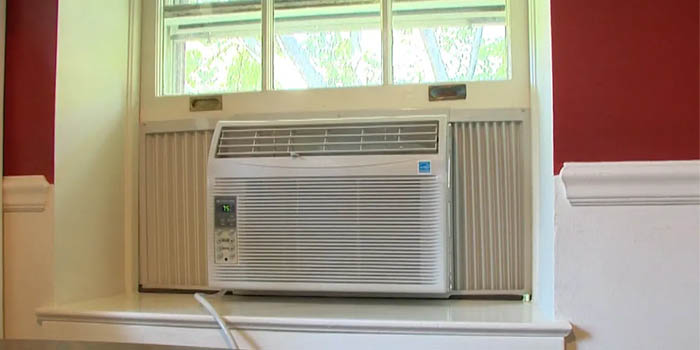Knowing which air conditioner to purchase to keep your indoor environment cool and comfortable in the heat of the summer will make all the difference. Depending on various factors, you may need a portable air-conditioner, a window air consider, wall-mounted air conditioners, or a whole-house central air conditioner. As such, you need to acquaint yourself with the various air conditioner choices you have.
Moreover, you need to know which AC suits your house based on factors such as the outlet available. Your outlet may only support the 120-volt models, which are prevalent in the marketplace. Your outlet may also support 240-volt models, which are larger but much more efficient in cooling larger spaces.
If you settle for a window air conditioner, there are several factors that you need to be mindful of when purchasing one. For instance, you need to consider the size of the air conditioner very carefully. BTU rating is the air conditioner size rating; the cooling capacity of the air conditioners is directly related to BTU rating/number provided. The larger the BTU number, the higher its cooling capability. The chart provided herein will give you a better understanding of the minimum BTU rating for your room or space in your house.
That said, you may invest in a window air conditioner to simply supplement the central air conditioner cooling in a specific room. For instance, you can add an air conditioner in your bedroom to further cool the space.
While the central air conditioner might suffice in keeping the entire house cool and comfortable, the temperature level might be a tad higher than you want in your bedroom. Instead of cooling the whole house to get a cooler bedroom, you might use an energy-efficient window air conditioner to cool your bedroom for the perfect sleeping temperatures.
Physical Size And Shape
Owing to the size and performance relationship of mechanical components of the air conditioners, the physical size of window air conditioners does influence their BTU and inadvertently their cooling capacity. As such, a small window air conditioner will most likely yield a low BTU rating while a larger air conditioner will yield a higher BTU. The physical size of an AC may present a challenge in that a larger air conditioner with a higher BTU rating may not fit on your small window. You can, however, overcome this by installing two small air conditioners on two different windows.
To ensure you do not purchase an air conditioner that does not exceed the dimensions of your window, open the window you intend to install the air conditioner as much as possible. Measure the height and width to get the maximum size of the air conditioner that can fit in the window. Thereafter, you should note the window configuration. The vast majority of window air conditioners are designed for single- or double-hung windows. If you have a sliding window, search for an air conditioner designed for that type of window design.
Matching The Outlet Type And Circuit Size
The next size consideration when choosing a window air conditioner is the electrical outlet available for the air conditioner. Window air conditioners are available in both 120V and 240V models. Each model requires an outlet with the right voltage rating to work safely and efficiently. As such, ensure you know the outlet you will be using before purchasing the power unit. Otherwise, you might need to rewire the outlet if you purchase a unit without checking the outlet rating.
Calculate Room Size
Calculating the size involves multiplying the length by the width of the room/space to be cooled. The golden rule is to multiply that size with 25 BTU. In using this calculation, you will purchase an air conditioner with ample cooling capacity regardless of the conditions; whether it is a sunny, humid and hot, or rainy day, the air conditioner will perform exemplarily.
As an example, let’s say space is 12W by 15L feet. Multiply the size to get 180 square feet of space. Then take the 180 sq. Ft. and multiply by 25 BTU to calculate the minimum BTU rating your air conditioner should have. In this case, you should purchase an air conditioner with a 4500 BTU rating (after calculating 180X25).
The reason you need to size the air conditioner right is to balance the cooling effectiveness and energy efficiency of the AC. A smaller AC will have to keep running to maintain the cooling effect. In this case, it will be energy-inefficient, and it might not adequately cool your home.
Do Not Overkill
While under-sizing your AC is wrong, so is oversizing. In the case of window AC, bigger is not always better. Consider this, the function of an AC is not only to cool the room/space, but it is also to extract moisture that makes you feel hot and sticky. With a large AC, it will cool the room/space very fast, and once the AC attains the set temperature, it will shut off.
With fast operations, the AC will not have been running long enough to extract moisture and reduce the humidity as needed. As such, you will end up with a cool yet foggy and clammy space. This is not comfortable at all.
Pro Tips
For the best experience, consider going for a built-in wall-mounted air conditioner rather than installing a window AC. Wall-mounted ACs tend to more efficient and do a better job of cooling. For starters, the window units are often positioned near the floor. On the other hand, the wall-mounted units are installed about 5 to 6 feet above the floor.
This kind of installation has the advantage of introducing cold air from higher ground, causing cool air to descend and warm air to rise. This stirs the air in the room by creating air currents. It increases the cooling effect significantly. It is good to ask help from HVAC contractor in Houston like AC Man Houston for any AC problem cases. Another important pro tip for homeowners is to have a reliable emergency AC service available to them. Providers like emergency ac repair Phoenix can immediately address urgent HVAC problems when you need it at the most inconvenient times.
Additionally, the AC thermostat is housed within the AC and the higher you install the AC, the better accuracy you will get from your thermostat reading. Finally, a wall-mounted AC comes with a built-in sleeve. This means the AC can be pulled out with ease at the end of summer in readiness for winter storage.




